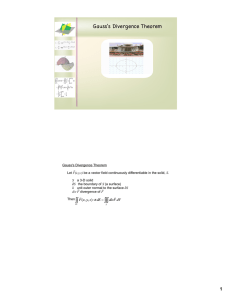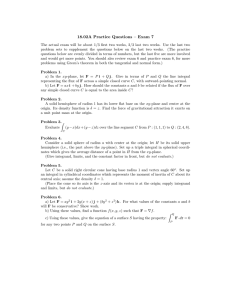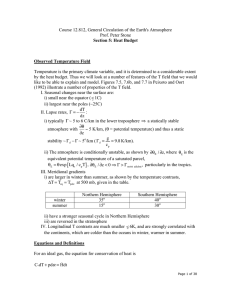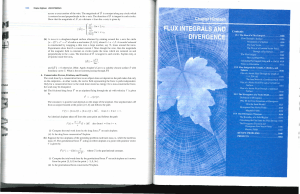PH 316 WS on spherical coordinates A 9/4/08
advertisement
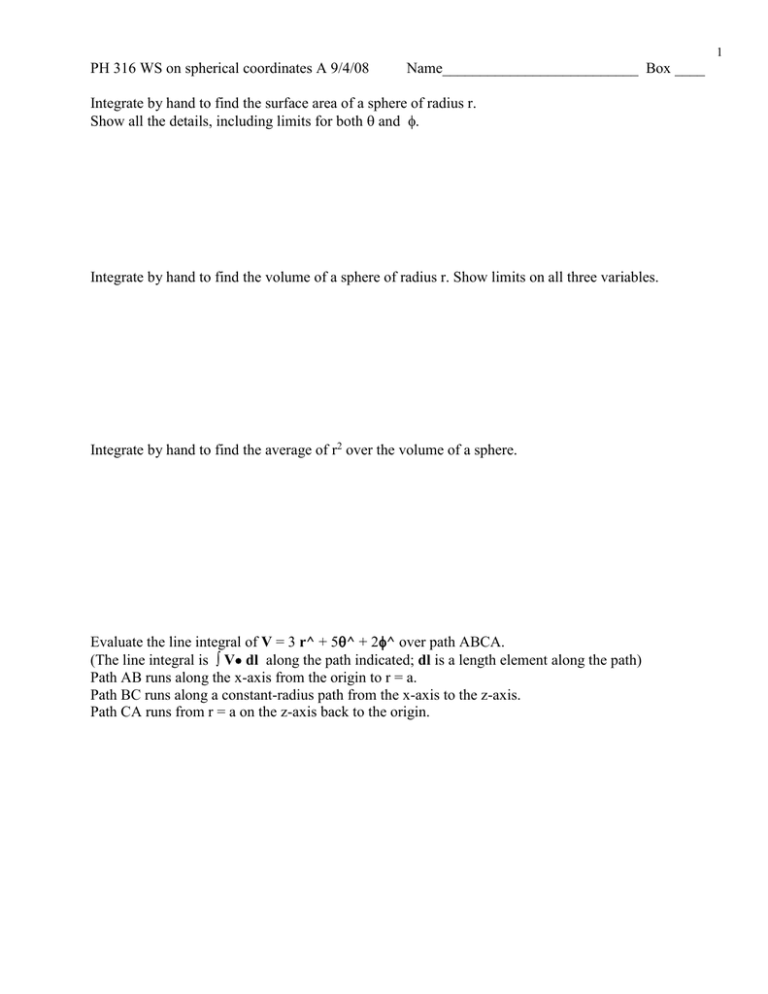
1 PH 316 WS on spherical coordinates A 9/4/08 Name__________________________ Box ____ Integrate by hand to find the surface area of a sphere of radius r. Show all the details, including limits for both and . Integrate by hand to find the volume of a sphere of radius r. Show limits on all three variables. Integrate by hand to find the average of r2 over the volume of a sphere. Evaluate the line integral of V = 3 r^ + 5^ + 2^ over path ABCA. (The line integral is V dl along the path indicated; dl is a length element along the path) Path AB runs along the x-axis from the origin to r = a. Path BC runs along a constant-radius path from the x-axis to the z-axis. Path CA runs from r = a on the z-axis back to the origin. 2 Consider a uniform vector V which points only in the x-direction. We would like to calculate its flux over a hemisphere of radius R, as shown in the sketch. V 2R This is a 'closed' surface, enclosing a volume. a) Calculate the flux of V through the flat surface. This should be quick. b) Use spherical polar coordinates to calculate the flux of V through the curved part of the hemisphere. Please carry out the intergral over angles (the polar angle) and (the azimuthal angle). Show the limits, and all the details. Take the z-axis to be vertical. Evaluate the flux of the vector V = 3 r^ + 5^ + 2^ over the surface of a hemisphere of radius R, centered at the origin, its flat side in the xy plane. (The ‘flux’ of a vector is V da over the area indicated) Ditto for a vector V = 4 z^ over the hemisphere above, centered on the origin, flat side in the xy plane. This is the net flux, over both the flat and curved parts of the hemisphere.




